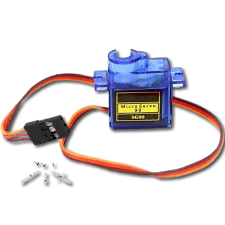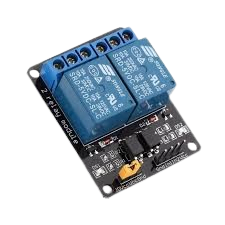No products in the cart.
Arduino Uno Programming Board's
ATmega328 Board with LCD 16X2
Availability:
4 in stock
The ATmega328 board with a 16×2 LCD is a versatile setup ideal for electronics projects. Combining the powerful ATmega328 microcontroller with a clear 16×2 character display, it’s perfect for DIY projects, education, and prototyping, offering easy interfacing and robust functionality for a variety of applications.
₹584.10 ₹1,121.00 (Inc. GST)
4 in stock
🔥 Limited Stock! Order now before it's gone! Holi Festival Sale is Live Now !!
ATmega328 Board with LCD 16X2
Introduction
The ATmega328 board with a 16×2 LCD display is a powerful and versatile setup widely used in electronics projects. Combining the ATmega328 microcontroller, commonly associated with Arduino Uno, and a 16×2 character LCD, this configuration provides a robust platform for a variety of applications ranging from DIY projects to educational purposes and professional prototyping.
ATmega328 Microcontroller
Features
The ATmega328 is an 8-bit microcontroller from Atmel, now part of Microchip Technology. Operating at 16 MHz, it features 32 KB of Flash memory for program storage, 2 KB of SRAM for data handling, and 1 KB of EEPROM for non-volatile data storage. It also provides 23 general-purpose I/O pins, allowing for extensive connectivity with various sensors, actuators, and other peripherals.
Ease of Use
The ATmega328 is renowned for its ease of use, especially when programmed through the Arduino IDE. This software offers a comprehensive library of functions and a large community for support, making it accessible to both beginners and experienced developers.
LCD 16×2 Display
Overview
The 16×2 LCD display can show 16 characters per line on two lines, ideal for displaying text, numbers, and simple symbols. It utilizes the Hitachi HD44780 controller, which is compatible with many microcontrollers, including the ATmega328.
Interface
Typically, the LCD interfaces with the microcontroller using either 4-bit or 8-bit parallel communication. This interface requires several digital pins for data and control signals, enabling efficient display of information such as sensor readings, system status, and user prompts.
Applications
DIY Electronics Projects
The ATmega328 board with a 16×2 LCD is perfect for DIY electronics projects like home automation, data logging, and interactive displays. Enthusiasts can create applications such as weather stations, digital clocks, and user interfaces.
Educational Use
In educational settings, this setup serves as an excellent tool for teaching microcontroller programming and electronics. Students can learn to interface with displays, manage inputs and outputs, and develop interactive applications.
Prototyping
For professionals, the ATmega328 board with an LCD provides a convenient platform for prototyping new ideas. The ability to display real-time data and messages simplifies the debugging process and enhances user interaction.
Conclusion
The ATmega328 board with a 16×2 LCD display is a highly versatile and powerful platform suitable for a wide range of applications. Its combination of the robust ATmega328 microcontroller and the clear, informative 16×2 LCD makes it an excellent choice for hobbyists, educators, and professionals seeking a reliable and user-friendly development setup.
Sold By : Computronics Lab
SKU: atmega328-board-with-lcd-16x2
Category: Arduino Uno Programming Board's
Tags: DIY electronics, Electronic Components, electronics projects, Greater Noida, Robotics
| Weight | 0.00 kg |
|---|---|
| Dimensions | 0.00 × 0.00 × 0.00 cm |
Based on 0 reviews
0.0 overall
0
0
0
0
0
Be the first to review “ATmega328 Board with LCD 16X2” Cancel reply
Related products
- Sensors and Modules
Soil Moisture Sensor Module
0 out of 5(0)The Soil Moisture Sensor measures the volumetric water content in soil, providing crucial data for agriculture and gardening applications. It typically features two probes that detect soil moisture levels and output a corresponding signal to a microcontroller. This sensor helps optimize irrigation, prevent overwatering, and monitor soil health, making it ideal for automated watering systems and environmental monitoring projects.
SKU: soil-moisture-sensor - Servo Motors
Servo Motor SG90
0 out of 5(0)The Servo Motor SG90 is a compact and lightweight servo, perfect for precise control in robotics and model projects. With a 180-degree rotation range, it’s ideal for steering, arm movements, and other motion control tasks. Its reliability and ease of use make it a popular choice for hobbyists and professionals alike.
SKU: servo-motor-sg90 - Sensors and Modules
Relay Module 2 Channel 12V
0 out of 5(0)The Relay Module 2 Channel controls two high-voltage devices with low-voltage signals. Each relay handles up to 10A at 250V AC or 30V DC. Featuring optocoupler isolation for safety and LED indicators for status monitoring, it is ideal for home automation and DIY projects.
SKU: relay-module-2-channel - Adaptors and SMPS Power Supplies
Adaptor 12V 1Amp
0 out of 5(0)The Adaptor 12V 1Amp is a reliable power supply unit designed to provide a stable 12V output with a 1A current capacity. Ideal for powering various electronic devices, including Arduino projects, small motors, and other low-power applications, it ensures consistent performance and efficient operation. Its compact design and universal input make it a versatile choice for both home and industrial use.
SKU: adaptor-12v-1amp







There are no reviews yet.